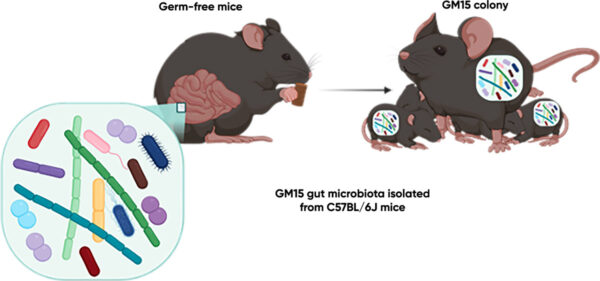A standardized gnotobiotic mouse model harboring a minimal 15-member mouse gut microbiota recapitulates SOPF/SPF phenotypes

Case Study
A standardized gnotobiotic mouse model harboring a minimal 15-member mouse gut microbiota recapitulates SOPF/SPF phenotypes.

The gut microbiome plays a major role in animal and human health, and may influence the development of diseases, as well as the host response to drugs. Thus, there is a need for reproducible animal models with standardized gut microbiota for the study of drug-host-microbiota interactions.
Despite global efforts to standardize breeding and experimental procedures, the undefined composition and interindividual diversity of the microbiota of laboratory mice result in several limitations:
In this context, BIOASTER undertook the ambitious project to generate a standardized gnotobiotic mouse model with a representative mouse gut microbial consortium.
BIOASTER developed and validated in collaboration with academic partners a simplified mouse gut microbiota and its related gnotobiotic mouse model.
In this project, we implemented and combined several technologies in order to:
Taken together, our results establish that the GM15 mouse model offers the potential to ensure an increased reproducibility and robustness of preclinical studies in the host- microbiome field.
The GM15 mouse model will benefit the scientific and industrial community by providing in vivo experimental evidence sustaining the causal link between a given microbiota and health or disease.
In addition, the GM15 model offers exciting perspectives for preclinical research focusing on drug-host-microbes interactions to evaluate antimicrobial resistance and the impact of drugs on commensals and on the intestinal barrier function. Finally, the GM15 model with its simplified gut microbiota also offers the possibility to use it as a template for establishing customized and further complex consortia to investigate specific biological questions.